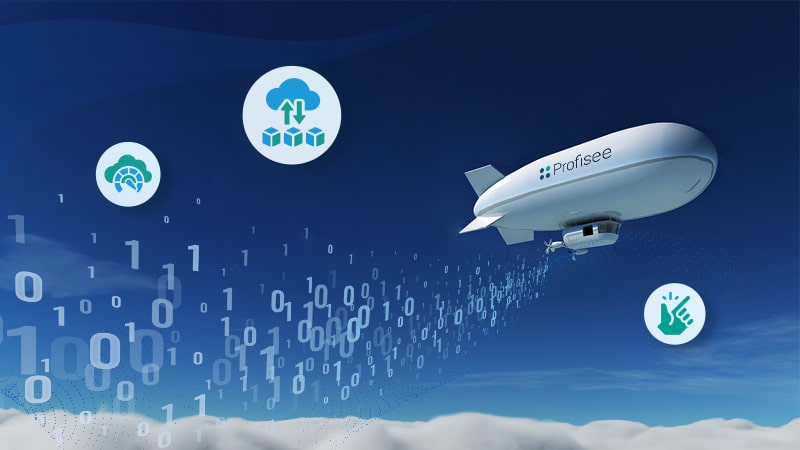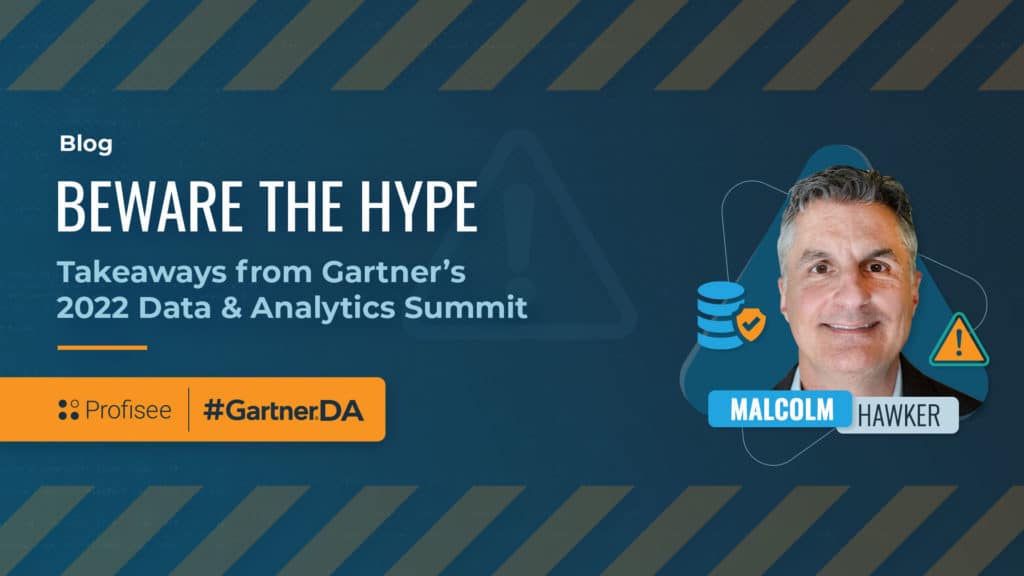As organizations become more data-driven, managing vast amounts of critical information has become a challenge. Master data management (MDM) plays a pivotal role in ensuring that essential, widely shared data — such as customer, product, location and vendor information — remains consistent, accurate and accessible.
But companies have another trend to consider: the increasing mandate to move their legacy, often on-premises systems and applications to the cloud. But because simply migrating enterprise data to the cloud alone won’t address underlying data quality problems, many companies are looking to add MDM to their cloud-focused data estate.
When architected and deployed properly, these cloud–based MDM systems provide unique advantages over on-premises systems and represent the future of how companies manage their master data. In this article, we’ll explore what cloud MDM is, how it differs from traditional MDM and how the benefits of cloud-based MDM can help you meet your business goals.
What is Cloud Master Data Management?
Cloud master data management refers to the deployment of MDM solutions in the cloud, rather than on-premises. This means that the technology and infrastructure supporting the MDM system are hosted by a cloud provider, allowing organizations to access and manage their master data even if it isn’t hosted physically where they are located. Cloud-based MDM is designed to provide flexibility, scalability and efficiency, making it a preferred choice for businesses that want to streamline their data management operations.
At Profisee, a leading MDM vendor, we’ve seen firsthand how the benefits of cloud-based MDM solutions have revolutionized data management for companies across various industries. By leveraging cloud technologies, businesses can eliminate many of the roadblocks that come with on-premises systems and unlock greater potential for their data management strategies.
Profisee offers customers multiple paths to achieving trusted, consumable data with cloud MDM:
- Software-as-a-Service (SaaS): Profisee-managed instance of Profisee MDM hosted in the Azure cloud. Full turn-key service for the easiest and fastest MDM deployment.
- Platform-as-a-Service (PaaS) or Infrastructure as a Service (IaaS): Complete deployment flexibility and control in any cloud, including your own Azure cloud tenant or on another service like Google Cloud or Amazon Web Services (AWS).
Profisee SaaS is often “the fastest path to trusted data” in that the platform and hosting are combined in a single enterprise agreement, allowing companies to get started quickly without dedicating internal resources to managing a self-hosted cloud instance, while Profisee PaaS or IaaS gives customers complete control over their deployment.
Here is a brief comparison of SaaS vs. PaaS and the differences in deployment options:
| Profisee MDM SaaS | Profisee MDM PaaS | |
|---|---|---|
| Software | Same full-featured, modern MDM platform | |
| Deployment Options | Hosted in Azure by Profisee | Azure, AWS, GCP, any cloud |
| Cloud management expertise | None | Medium |
| Cloud infrastructure costs | Included with Profisee | Paid by Customer |
| Installation | Profisee-managed, available in minutes | Managed by Customer Software available as containerized Kubernetes service |
| Network Configuration | Profisee | |
| Security | SOC 2, HIPAA/HI-TECH, Encrypted | |
| Upgrades | Customer-scheduled, Profisee-executed | |
| Automated Failover | Included for free | |
| Availability | Industry-leading 99.9% with Azure | |
How is Cloud-Based MDM Different from Traditional MDM?
While traditional MDM software is often installed on the customer’s or user’s local servers, cloud-based MDM is hosted in the cloud, often with a major cloud provider like Azure, AWS or Google Cloud. Here are some of the key differences between cloud-based versus traditional MDM:
- Infrastructure: On-premises MDM requires companies to maintain hardware, storage and networking systems, while cloud-based MDM eliminates the need for expensive hardware and maintenance costs by outsourcing those needs to cloud providers like Microsoft Azure. Note that PaaS deployments, while less intensive than on-prem deployments, still require customers to maintain their own network configuration, security and update schedule.
- Scalability: Cloud-based MDM solutions are far more scalable than traditional setups, allowing organizations to quickly expand as their data needs grow. Because the MDM system is hosted in a managed cloud server by a leading cloud provider, customers don’t need to physically buy or plan for additional hardware or networking equipment to accommodate additional MDM use cases or data domains.
- Deployment Speed: With cloud MDM, deployment can happen much faster, sometimes in a matter of weeks. Profisee’s FastStart methodology offers a 90-day implementation approach, helping companies implement quickly and begin realizing value as opposed to being slowed down by complicated, on-premises MDM configurations.
What Are the Benefits of Cloud Master Data Management?
The shift toward cloud MDM offers several advantages that on-premises solutions simply can’t match. Here are the top benefits of adopting cloud-based MDM:
1. Lower Total Cost of Ownership (TCO)
Cloud MDM significantly reduces upfront costs. With no need for purchasing and maintaining hardware, businesses can focus their budget on software and services that directly impact their master data strategy. Additionally, many cloud MDM providers offer a consumption-based, pay-as-you-go model for data volumes, allowing businesses to scale their usage based on demand, avoiding the large capital expenses typically associated with on-premises systems with one-time, perpetual license models.
2. Greater Flexibility and Agility
One of the most appealing aspects of cloud MDM is its flexibility. Cloud-based solutions are designed to grow alongside your business, making it easy to scale up or down as needed. This means companies no longer need to worry about capacity constraints or hardware limitations as they expand to other data domains like asset management or customer data.
Cloud-based MDM platforms can also more seamlessly integrate and connect to your other tools and systems, including data governance, data security and more.
3. Faster Time to Value
Implementing an MDM solution can traditionally take months or even years. However, with Profisee’s cloud-based MDM platform, organizations can start realizing value in just weeks.
SaaS Cloud deployments reduce the need for lengthy installation processes, allowing companies to focus on making data-driven decisions sooner.
4. Enhanced Data Security and Compliance
Security is a top concern for any business managing sensitive data. Cloud providers like Microsoft offer industry-leading security protocols, ensuring that data is protected with the latest encryption and authentication technologies. Additionally, cloud MDM solutions provide regular updates and patches, keeping your system secure and compliant with the latest regulations.
Beyond the security and available inherent in the cloud host’s infrastructure, MDM vendors also need to develop and ensure the security of their own MDM software. For example, Profisee MDM’s cloud operations are 100% automated using Terraform to avoid the possibility of human error leading to an outage or security breach.
5. Remote Accessibility
In today’s increasingly remote and hybrid work environments, having access to data from anywhere is crucial. Cloud-based MDM solutions enable employees to securely access and manage data from any location, fostering collaboration across departments and geographies.
For example, Profisee can be easily configured with leading zero-trust access controls like Microsoft Entra ID for secure remote access.
How to Choose the Right Cloud Master Data Management Solution
Selecting the right cloud-based MDM solution is critical for ensuring success. When evaluating options, businesses should consider:
- Integration Capabilities: Ensure that the solution integrates seamlessly with your existing technology stack, including ERP, CRM and analytics platforms.
- Security Features: Look for providers that offer robust security measures, including data encryption at rest and in transit, multi-factor authentication and reputable compliance certifications like SOC 2 or ISO 27001.
- Scalability: Choose a solution that can scale with your business, accommodating increasing volumes of data as you grow. It is also critical to consider a multidomain MDM platform that can accommodate customer, product, location and other data within the same platform and UI.
- Support and Training: Look for a vendor like Profisee that offers comprehensive support and training to ensure smooth adoption and ongoing success.
Cloud MDM Cybersecurity
Cybersecurity is often a key consideration when moving to the cloud. With cloud-based MDM, businesses can benefit from the stringent security protocols that come with leading cloud providers. Profisee’s cloud MDM, for example, is hosted on Microsoft Azure, which offers enterprise-grade security features such as advanced threat detection, end-to-end encryption and automatic compliance updates, not to mention strict physical security protocols.
Additionally, companies can rest assured knowing that their master data is secure in a highly reliable and resilient cloud environment.
Features and benefits of the Azure cloud security baked into Profisee MDM SaaS include:
- Availability: 99.9% availability and uptime
- Disaster Recovery: Multi-Region zone redundancy, hot standby sibling region replication
- Always-on: Availability zones for high up-time with geo-redundancy for disaster recovery.
- Cost: Free up valuable staff and eliminate the need for managing upgrades, patches, maintenance and specialized skills — all with a simple, predictable cost based on data volumes
- Simplicity: All cloud infrastructure, hardware, cloud compute and or cloud storage are included at no additional cost with one agreement and no third parties
You can learn more about the security benefits of Profisee MDM SaaS in our datasheet.
With any SaaS solution, it’s important to remember that cloud providers like Azure and AWS are responsible for security of the cloud infrastructure while the software vendor is responsible for security in the cloud. In other words, just because a cloud platform has top-notch security does not guarantee that the SaaS tool has strong security. That’s why Profisee MDM is architected from the ground up with security in mind. Features and benefits of Profisee MDM (both on PaaS and SaaS deployments) include:
- Validated certifications from third-party experts, including
- Encryption of data at rest and in transit
- Tenant isolation
- Network security
- Access security
- Third-party network audits
- Third-party application testing
- Cybersecurity insurance
- Integrated with customer single sign-on
For full details, see the Profisee Security policies: https://profisee.com/security.
Cloud-Based MDM is the Future
The future of MDM lies in the cloud. With benefits ranging from reduced costs to enhanced flexibility and security, cloud MDM offers businesses a more agile and efficient way to manage their critical data.
Are you in the middle of a cloud-based MDM evaluation? Learn about the 10 core capabilities that every cloud-based MDM solution should have today as you build your evaluation checklist.
10 Core Capabilities Every MDM Tool Should Have

Benjamin Bourgeois
Ben Bourgeois is the Head of Product and Customer Marketing at Profisee, where he leads the strategy for market positioning, messaging and go-to-market execution. He oversees a team of senior product marketing leaders responsible for competitive intelligence, analyst relations, sales enablement and product launches. He has experience managing teams across the B2B SaaS, healthcare, global energy and manufacturing industries.








